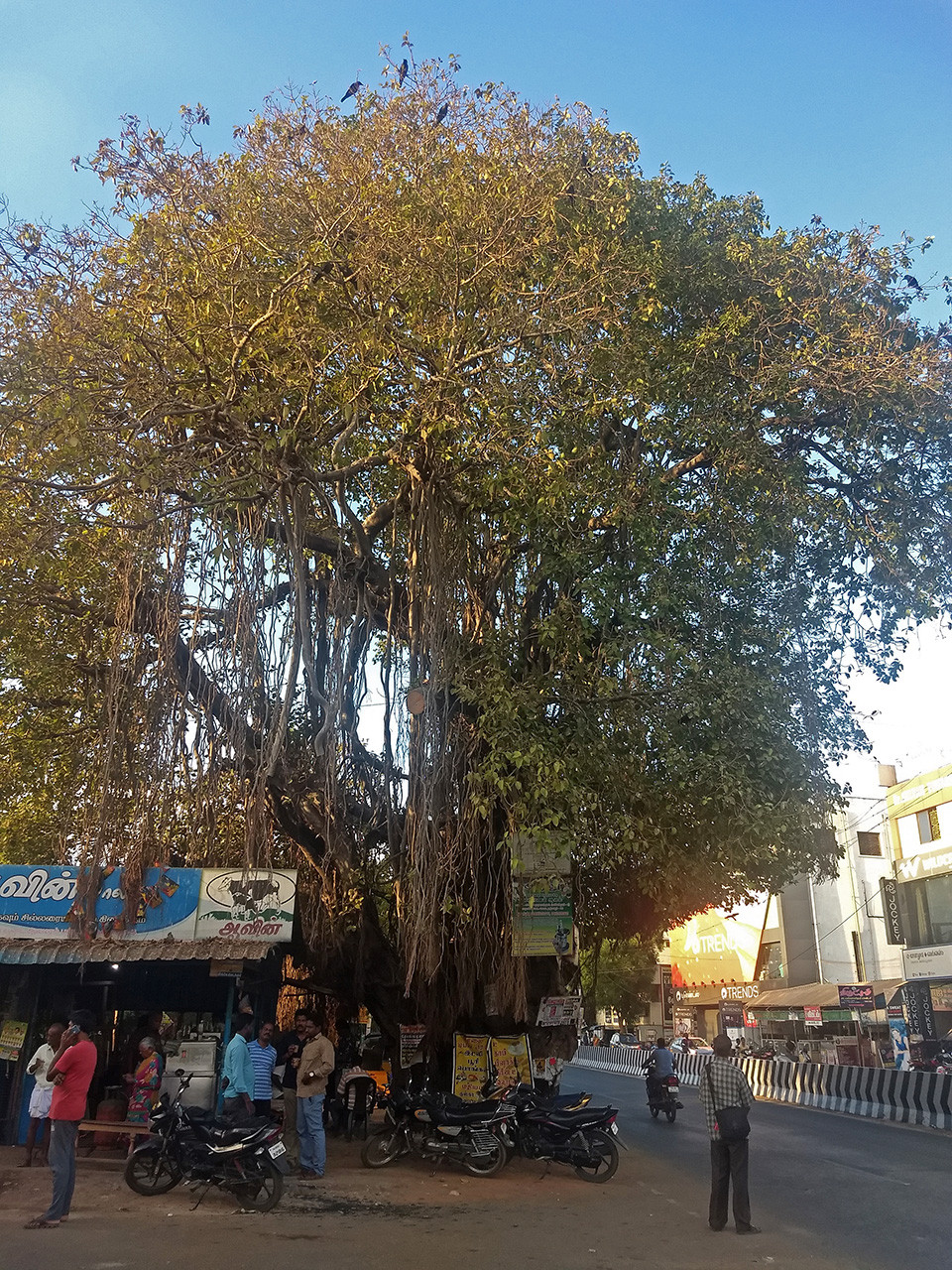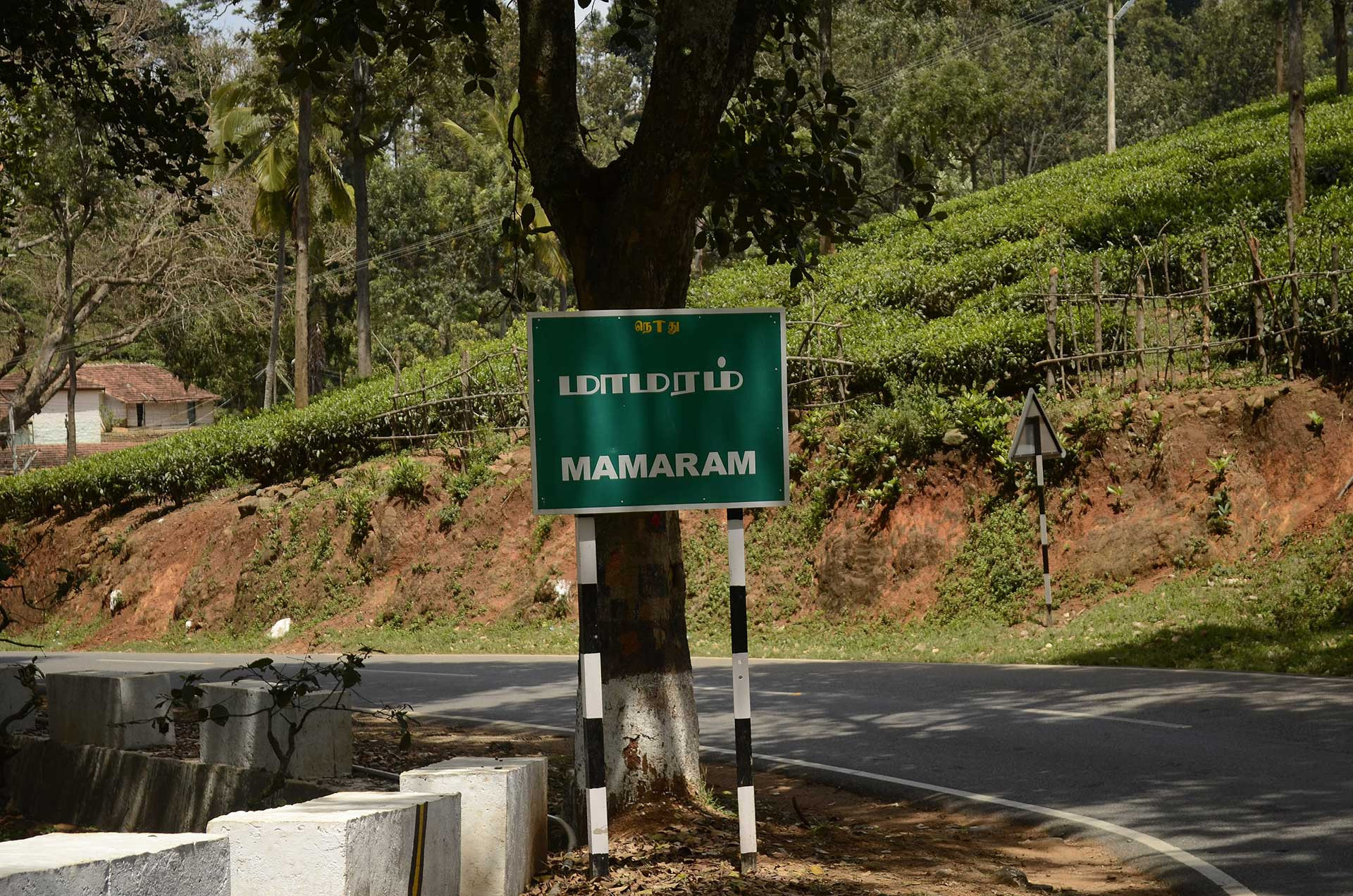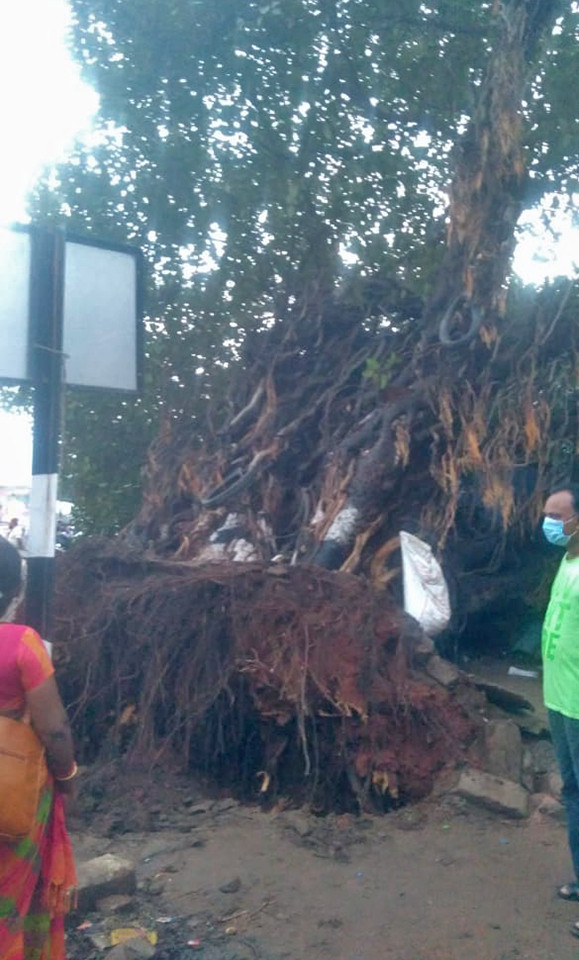I was in a town bus that was making its way from Thanjavur’s new bus stand to the old bus stand. It wasn’t crowded, but there were no empty seats. I was standing at the back, close to the steps. I heard a voice behind me, “How many wickets?” “Four,” came the reply. A young man, occupying the last seat, was watching a cricket match on his mobile phone. Seated next to him was a middle-aged man who was peeping at the small screen to try and catch a glimpse. Curious, I wanted to ask who was playing today when the shout of the bus conductor distracted me. “Alamaram veliyila vaanga!” He alerted the passengers who planned to get down at the Alamaram bus stop to collect their belongings and prepare to deboard.
Alamaram is Banyan tree in Tamil. I have travelled this route before and I quite like this bus stop named after a tree. Long ago, when I first heard the bus conductor calling out the name, I remember peeping through the window to catch a glimpse of the large Banyan tree. Since then, I have always wanted to get off the bus and take a proper look but had never managed to do so. This time, I did.
It was late in the evening. I stood there gazing at the tree from about 20m away. It was about 10m high and the huge trunk suggested that the tree must have been several decades old. The aerial roots falling from above mostly hung beyond reach. I could see that one of the main branches had been cut just above the road, suggesting how the tree’s cover could have been much larger. Life under the Banyan tree was busy. There was a tea shop, an auto-rickshaw stand, and there were a few motorcycles parked under the shade. An old woman was selling flowers and a middle-aged man kept his four-wheeled fruit cart parked under the shade of the tree. There were a few crows and mynas calling about from the tree. I bet Coppersmith Barbets, Asian Koels and Rosy Starlings loved devouring its bright red and fleshy fruits. I took a few photos of that magnificent tree with my phone camera. I hung around for another five minutes and caught the next bus to the old bus stand. I wish I had spent some more time but it was starting to get dark.
Later, I called up my uncle, a retired bus conductor who had worked in Thanjavur. He recalled that in the 1990s, the Thanjavur–Pudukkottai route used to be a single road and had been widened into a two-lane road only in early 2000. He said that even though several new residential buildings, housing units and other commercial buildings had cropped up around the Banyan tree, the name of the bus stop hadn’t changed.
It is very commonplace in India for landmarks to be named after a tree, a pond (there is a village named Thattankulam which means dragonfly pond), or something that is part of nature. I always find it pleasing when I come across meaningful, locally-relevant, nature-inspired names on signboards while travelling. These names tell us a piece of information or even a story about that particular place. This kind of nomenclature must have started when there were no buildings or any other notable structures around. I am certain that in India, there are hundreds of other bus stops with tree names like Thanjavur’s Alamaram bus stop. Toponymic research (study of origin and etymology of place name) in India is still in its rudimentary stage. Although there are a few regional works on village names, I wonder if anyone has specifically looked at or compiled nature-related words represented in bus stop, railway station, and street nomenclature. This could be an interesting project for geography students or any others who are interested in the topic.
An increase in various other modes of transportation has alienated us from bus travel. Had I taken an auto or a cab I wouldn’t have known the name of this bus stop or this magnificent tree. The maps on our mobile phones help us to navigate and reach our destinations quicker, give us traffic information, locations of restaurants, fuel stations, ATMs, hospitals, shopping malls and other ‘important’ places. How wonderful would it be to also have a map of the trees along our routes? If not all, at least the ones that have been around for ages, and for which we should ideally provide a heritage tree status. Mapping and photo-documenting such trees and feeding them into the virtual cement colour maps would make them more pleasing to our eyes.
In pursuit of reaching and sometimes searching for the destination, we fail to notice the trees by the roadside and other natural landmarks along the way. Even while travelling in public transport, we seldom look outside and are instead glued to our mobile phones or distracted by the music or movies being played inside the bus. They say the journey matters more than the destination. I feel how we choose to undertake the journey also matters.
We rarely use our memory map for navigation anymore and have become slaves to our phones that completely ignore any natural landmarks. We trust a smartphone more than a local who probably has a better knowledge of the area. In our ever-changing urban landscape, we are rapidly losing landmark and heritage trees in the name of road expansion. On November 1, 2021 (about two years since I last saw the Banyan tree at the Alamaram bus stop), I received a message from my father informing me that the tree had succumbed to the heavy rains and fallen over. The image he sent showed a completely uprooted and toppled tree. Stationed so far away from the fallen tree I could only grieve. The alamaram must have been there for centuries, witnessing and living through all the changes happening around it. All the while, tolerating the shocks from the running heavy vehicles, the heat from the tarmac, and the physical damage both above and below.
I was with that alamaram for only a few minutes, but still, I will miss that tree. There must be so many people who had been attached and acquainted with the Banyan tree at the Alamaram bus stop. The people who lived nearby, those who waited under its shade for their buses to arrive, the old lady who sold flowers beneath it, even the bus conductors and drivers plying that route—all might have developed some connection with the tree. I truly wish that someone would plant a tree sapling in the very place where the alamaram stood. I hope that they continue to call that place the Alamaram bus stop.






